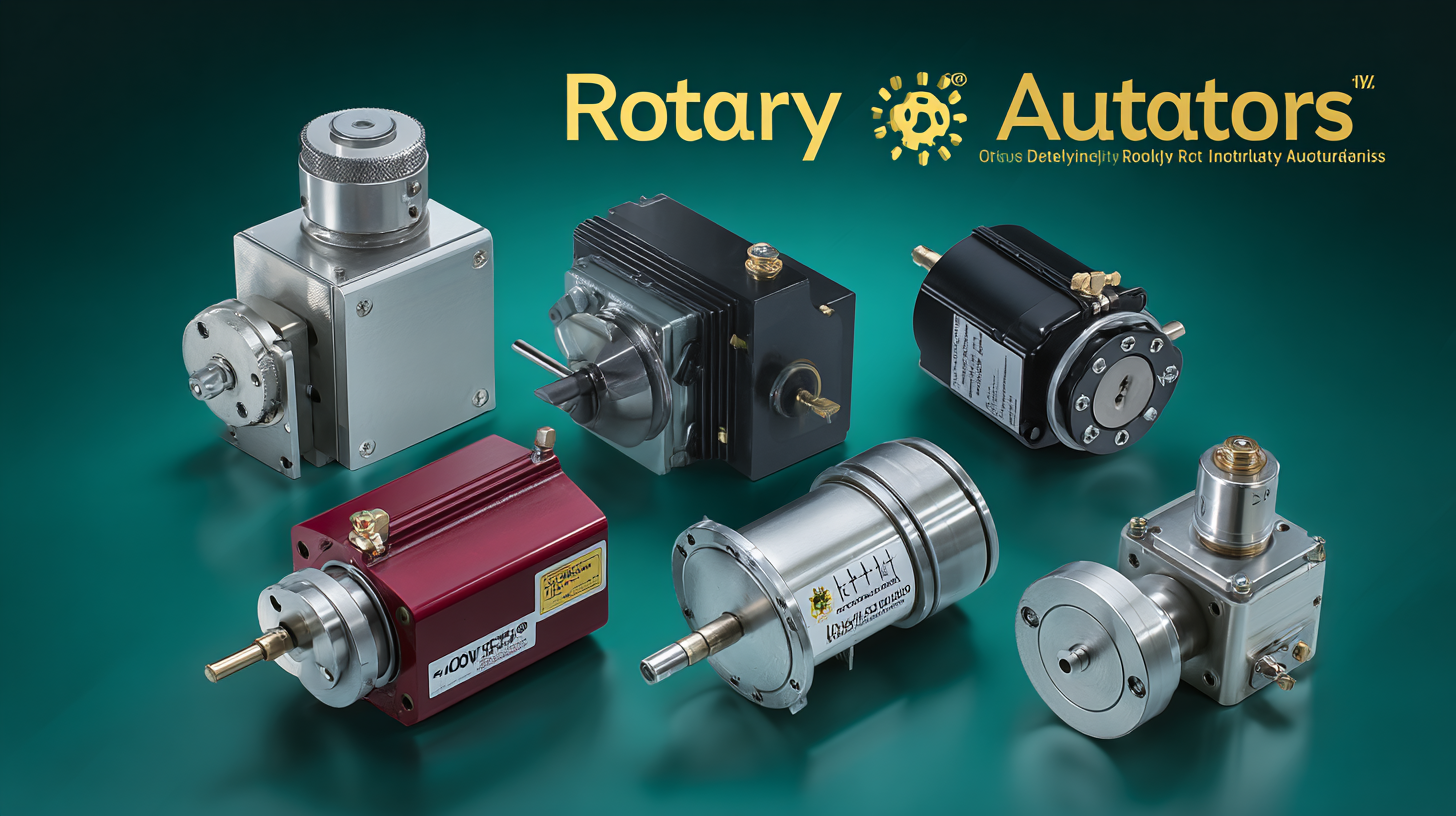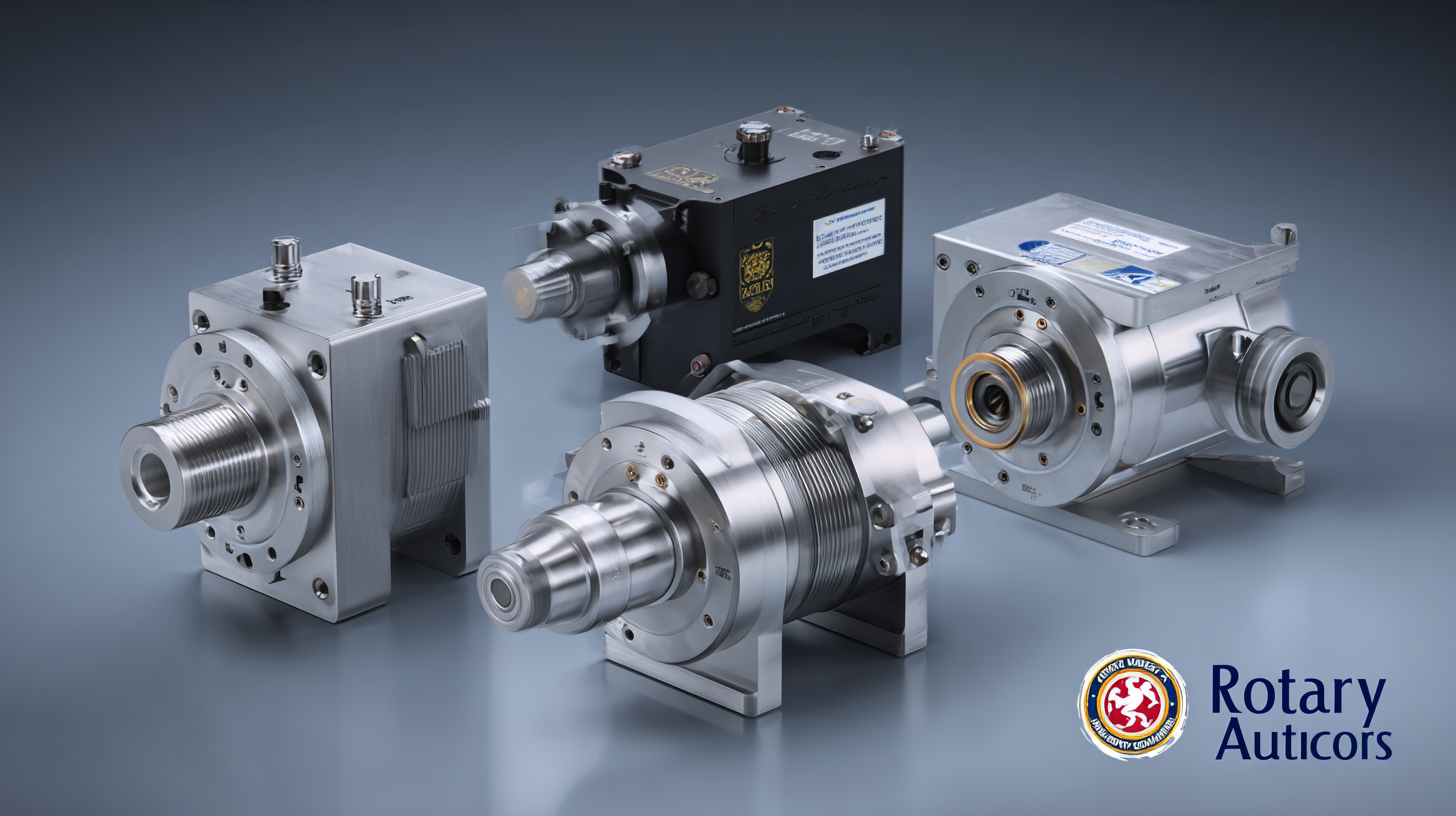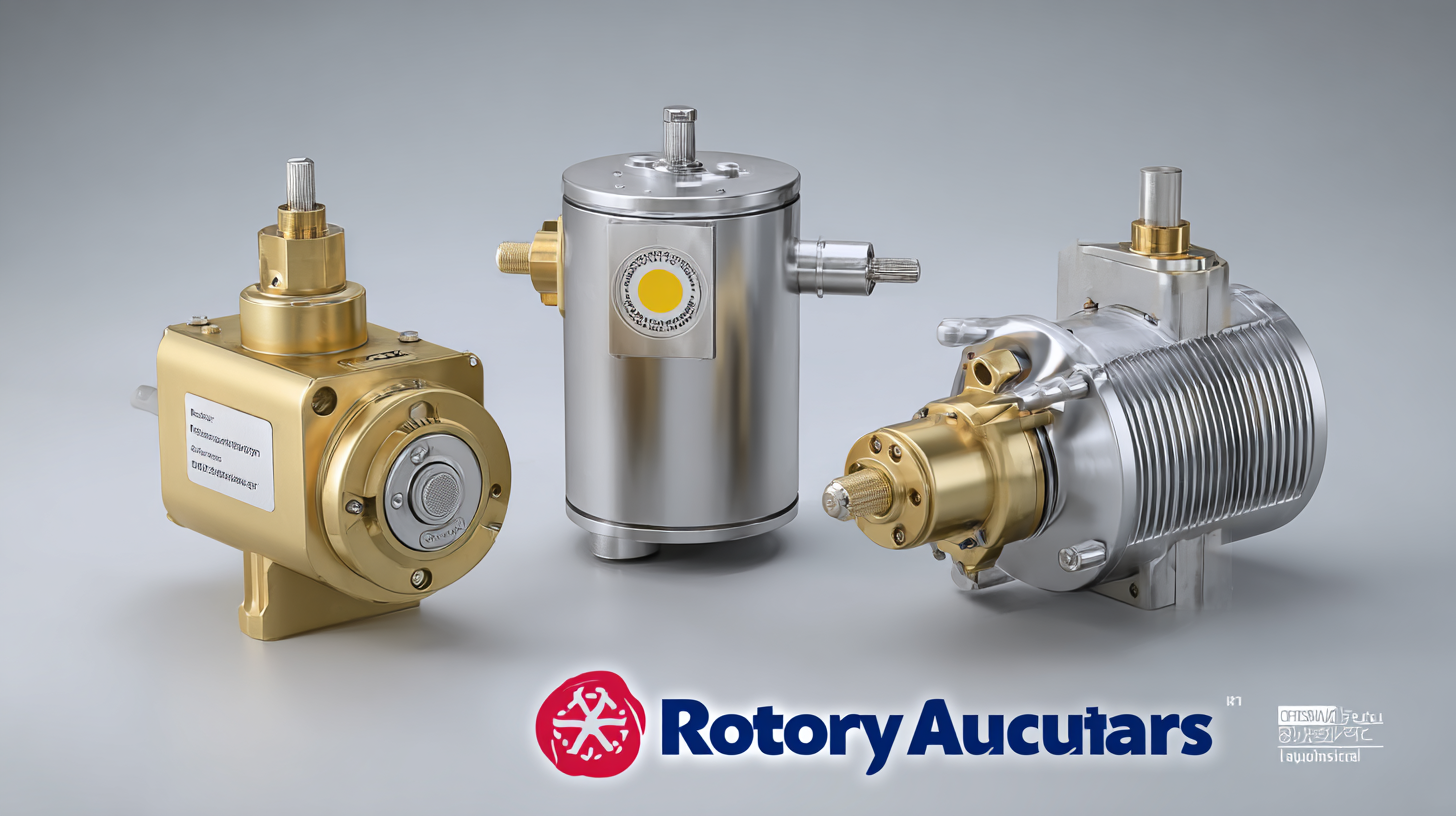In today's rapidly evolving industrial landscape, the significance of Rotary Actuators cannot be overstated. These essential components are pivotal in converting rotational motion into linear displacement, making them integral to automation and control systems across various sectors. According to a recent industry report by MarketsandMarkets, the global market for rotary actuators is projected to reach USD 9.3 billion by 2025, with a compound annual growth rate (CAGR) of 6.5% from 2020 to 2025. This growth underscores the increasing demand for efficient and reliable actuation solutions in manufacturing, aerospace, automotive, and robotics, among others. As industries seek to optimize their operations, understanding the diversity of rotary actuators and how to select high-quality manufacturers becomes crucial for maintaining competitive advantages. In this blog, we will explore the various types of rotary actuators available, highlight key factors in choosing reputable manufacturers, and provide a comprehensive comparison to help you make informed decisions in your procurement process.

The rotary actuator market is witnessing significant growth driven by diverse applications across various industries. By 2025, the market is poised for expansion, supported by key segments such as single-phase and three-phase rotary uninterruptible power supplies (UPS). The increasing demand for reliable power solutions in sectors like data centers, healthcare, and retail is fueling this growth. With the surge in digital transformation and the critical need for uninterrupted operations, industries are increasingly investing in rotary actuators to enhance system reliability and efficiency.
Additionally, the rotary encoder market is anticipated to grow substantially, with its size exceeding $2.58 billion by 2024 and projected to reach $7.19 billion by the end of 2037. This growth trajectory, representing a robust compound annual growth rate of approximately 8.2%, highlights the rising need for precise motion control and position feedback technology across various sectors. As automation continues to take center stage in manufacturing and other domains, the reliance on advanced rotary encoders becomes more pronounced, ensuring accurate processes and increased productivity.
Moreover, the rotary transformer market is also on an upward trend, expected to achieve a valuation of $1.04 billion by 2025 and approximately $3.57 billion by 2033, reflecting a remarkable compound annual growth rate of 16.1%. This robust growth signifies the vital role rotary transformers play in power management and control, further underscoring the evolution of rotary technologies across industries, where efficiency and reliability are paramount.

When exploring rotary actuators in automation, two primary types emerge: electric and pneumatic actuators, each boasting unique advantages. Electric rotary actuators are renowned for their precision and controllability, making them ideal for applications requiring exact positioning and minimal backlash. They are also energy-efficient and environmentally friendly, operating quietly with low maintenance requirements. This allows industries like robotics, packaging, and semiconductor manufacturing to harness their capabilities effectively.
In contrast, pneumatic rotary actuators excel in environments demanding rapid response times and high force outputs. Utilizing compressed air, these actuators deliver immense power and speed, making them suitable for heavy-duty applications such as material handling and automotive assembly. However, they typically require more maintenance due to the wear and tear of pneumatic components and potential air leaks. Ultimately, the choice between electric and pneumatic rotary actuators hinges on specific operational needs, including speed, precision, and environmental considerations, providing industries with diverse options tailored to their automation demands.
| Actuator Type | Torque Range (Nm) | Operating Pressure (bar) | Cycle Time (s) | Industry Applications |
|---|---|---|---|---|
| Electric Rotary Actuator | 10 - 5000 | N/A | 1 - 5 | Robotics, Packaging, Food Processing |
| Pneumatic Rotary Actuator | 5 - 3000 | 0.5 - 8 | 0.5 - 2 | Automotive, Assembly, Metalworking |
| Compact Electric Actuator | 1 - 50 | N/A | 0.5 - 3 | Medical Devices, Lab Equipment |
| Hydraulic Rotary Actuator | 50 - 6000 | 10 - 200 | 2 - 10 | Construction, Mining, Aerospace |
Rotary actuators play a pivotal role in various industries, particularly in robotics and manufacturing, where precision and efficiency are paramount. In robotics, these devices enable smooth and controlled movements, facilitating tasks such as picking, placing, and assembly. For instance, in robotic arms, rotary actuators allow for an extensive range of motion, making it possible to perform intricate operations in confined spaces. Their compact design helps engineers integrate them seamlessly into robotic frameworks, enhancing overall productivity.

In the manufacturing sector, the application of rotary actuators is equally significant. They are instrumental in conveyor systems and automated machinery, where they help in the rotation and positioning of components during assembly lines. This ensures consistency and reduces the likelihood of errors in production. Implementing rotary actuators in manufacturing processes can also lead to reduced cycle times, ultimately increasing output.
Tips: When selecting rotary actuators for your specific application, consider factors such as load requirements, speed, and environmental conditions. It's also essential to assess the actuator’s compatibility with existing systems to ensure optimal performance. Regular maintenance and checks are crucial to prolong the lifespan of these devices, preventing unexpected downtimes.
Rotary actuators play a pivotal role in driving innovation within the renewable energy sector, enhancing the efficiency and reliability of various systems. According to a report by MarketsandMarkets, the global market for actuators in renewable energy applications is projected to grow from $1.2 billion in 2021 to approximately $2.4 billion by 2026, reflecting a compound annual growth rate (CAGR) of around 15%. This significant growth is fueled by the increasing demand for clean energy sources, such as wind and solar power, where precise control and positioning are essential.
In wind turbines, for instance, rotary actuators are integral for adjusting the pitch of the blades, optimizing performance in varying wind conditions. Research indicates that utilizing advanced rotary actuators can improve energy capture by up to 10%, greatly enhancing overall efficiency. Furthermore, in solar tracking systems, they ensure that solar panels remain optimally aligned with the sun throughout the day, potentially boosting energy generation by 20-30%. As industries strive for sustainable solutions, the adoption of rotary actuators not only promotes operational excellence but also contributes significantly to the global renewable energy goals.
In the dynamic landscape of industrial automation, rotary actuators have proven crucial in numerous sectors, yet they are not without limitations. One of the most significant challenges faced in their application is the need for precise control under varying loads and environmental conditions. For industries such as aerospace and manufacturing, where reliability and accuracy are imperative, the threat of performance degradation due to temperature fluctuations or mechanical wear can hinder operational efficiency.
To combat these challenges, innovative solutions are emerging. For example, advanced sensors and feedback systems are being integrated into rotary actuators to enhance monitoring and adjust performance dynamically. Additionally, the development of robust materials designed to withstand extreme conditions is paving the way for more versatile actuators. With the implementation of smart technology and predictive maintenance, industries can effectively mitigate downtime and ensure that their rotary actuators function optimally, providing a strong return on investment and lasting reliability in an increasingly competitive market.